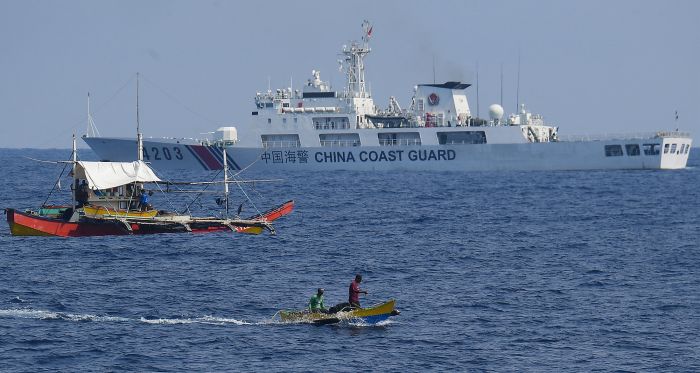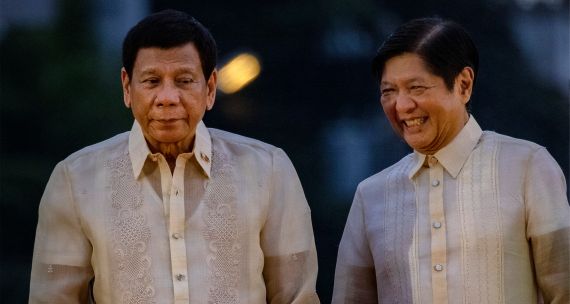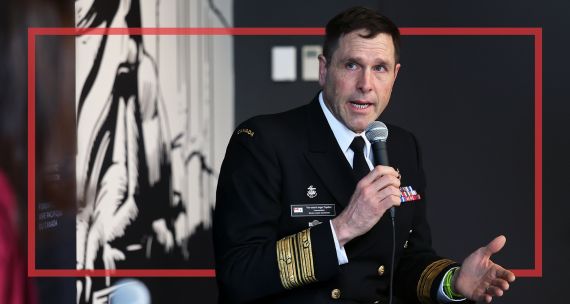The Takeaway
China has introduced new maritime patrol regulations, also known as China Coast Guard Order #3, to authorize its coast guard to detain foreign ships and individuals for up to 60 days if it suspects them of illegally entering what China considers to be its territorial waters.
There are fears that the regulations, which took effect on June 15, could ignite a conflict with the Philippines in the South China Sea (SCS), where tensions over rival territorial claims are running high.
In Brief
- According to Order #3, China can detain any foreign vessel or individual suspected of violating Chinese law in waters within “Chinese jurisdiction” for up to 60 days without trial. This new order is an update to China’s 2021 Coast Guard Law.
- The wording of Order #3 is not specific about what falls within “Chinese jurisdiction,” but it is assumed to include the maritime territory demarcated by China’s “nine-dash line” — the contested maritime border that, according to Beijing, grants China sovereignty over much of the SCS.
- In 2016, the Permanent Court of Arbitration in The Hague ruled overwhelmingly in favour of Manila’s territorial claims in the SCS. China rejected the ruling and continues to assert its “indisputable sovereignty” over the area.
- Confrontations between Chinese and Philippine vessels in the SCS have been at an all-time high since late 2023. A focal point of these confrontations is the Second Thomas Shoal, an occasional destination for Philippine civilian convoys asserting their fishing rights.
- On June 17, two days after Order #3 took effect, a Philippine Navy supply ship and a Chinese vessel collided near the Second Thomas Shoal, with reports indicating that Chinese forces wielded machetes, axes, and hammers, causing physical injury and damage to the Philippine boat.
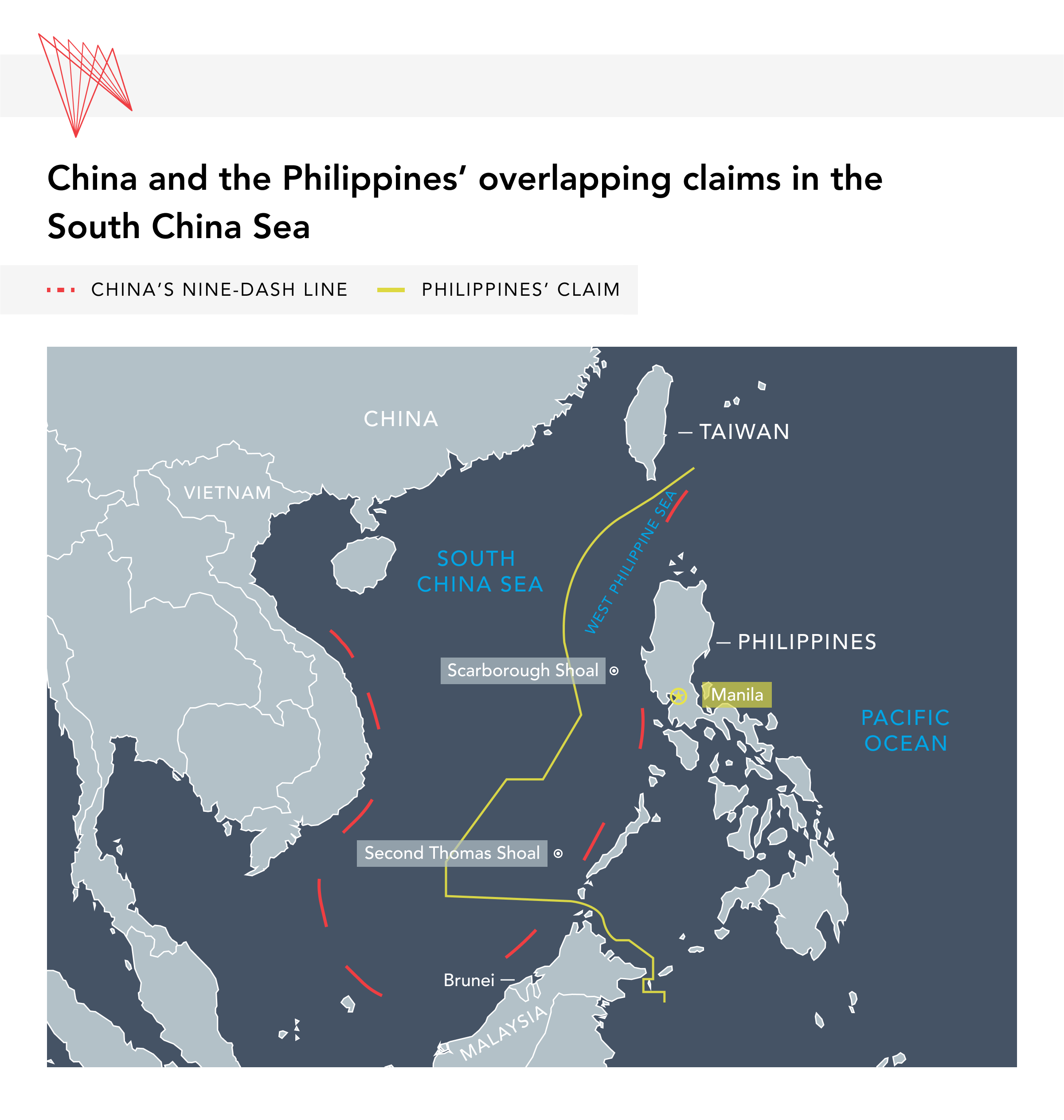
Implications
Manila is striking a defiant tone. The Philippines’ political and military leaders have been unequivocal in responding to both Order #3 and the June 17 confrontation. Speaker of the House of Representatives Martin Romualdez described China’s “unilateral actions” as a “blatant escalation of tensions”; a spokesperson for the Philippine Coast Guard called the moves “illegal” tools of coercion to justify Beijing’s “imaginary nine-dash line”; and General Romero Branwner Jr. of the Armed Forces of the Philippines implored his country’s fishers to not “be afraid to fish in the West Philippine Sea” where the Second Thomas Shoal is located, adding that “it is ours.”
Manila’s partners and allies are on alert. On June 18, a U.S. State Department official reaffirmed Washington’s commitment to defend the Philippines in line with the two countries’ 1951 mutual defence treaty. Experts say other governments will be watching for indications of the strength of U.S. deterrence. Also on June 18, Canada issued a statement condemning China’s recent actions near the Second Thomas Shoal. While the statement did not specifically mention Order #3, it denounced China’s “unilateral declaration of authority” and violation of international law.
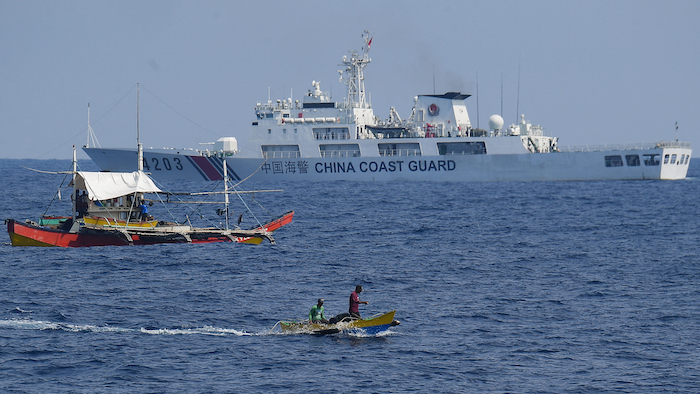
Japan has also been “closely monitoring events,” not only in the South China Sea, but near the Japanese-controlled Senkaku Islands in the East China Sea — islands China also claims and refers to as the Diaoyu. On July 1, Japan’s Ministry of Foreign Affairs issued a statement referencing China’s 2021 Coast Guard Law and its “problematic provisions in terms of consistency with international law.” According to Japanese reporting, Chinese ships had been spotted sailing near these islands nearly every day for the past several months.
The Philippines’ House Deputy Minority Leader France Castro called upon fellow members of the Association of Southeast Asian Nations (ASEAN) to push back against China’s “blatant disregard of Philippine sovereignty,” but thus far, ASEAN members have mostly remained silent.
Ambiguity raises the risk of miscalculation and misunderstanding. The wording of Order #3 is broad and vague. For example, it would apply in circumstances such as “suspicion of illegally entering, exiting or staying in [China’s defined borders]” or “harming [Chinese] national security and public order,” but does not specify what these terms mean in practice. Similarly, it fails to define the “necessary coercive measures or other law enforcement actions” China might take in enforcing the law. Some analysts suggest the ambiguity is intentional, presumably to give Beijing maneuverability in how it applies these new regulations. Moreover, as one observer notes, Order #3 “does not distinguish between state-owned and commercial vessels,” meaning “foreign coast guards or naval vessels” could be detained.
What's Next
1. Keeping de-escalation hopes alive
On July 2, representatives of China and the Philippines met in Manila for “crucial talks” aimed at easing tensions. The meeting was the ninth meeting of their Bilateral Consultation Mechanism on the South China Sea. While Beijing has not yet issued a statement, the Philippine side said that while there had been “substantial progress” on crafting measures to manage tensions, “significant differences remain.”
2. Turning to international law
The Philippines recently submitted a claim to the UN Commission on the Limits of the Continental Shelf to solidify its territorial claims over an extension of its continental seabed in the West Palawan Region. If successful, the Philippines would gain exclusive rights to “explore and exploit natural resources” within the extended seabed and subsoil.
3. Philippines-Vietnam diplomacy around SCS dispute
Notably, on June 20, Vietnam, whose territorial claims in the South China Sea overlap with those of the Philippines, said it was willing to talk to Manila to work toward identifying measures that are in both countries’ interests.
• Editors: Erin Williams, Senior Program Manager, APF Canada; Maya Liu, Program Manager, APF Canada; Vina Nadjibulla, Vice-President Research & Strategy, APF Canada.
